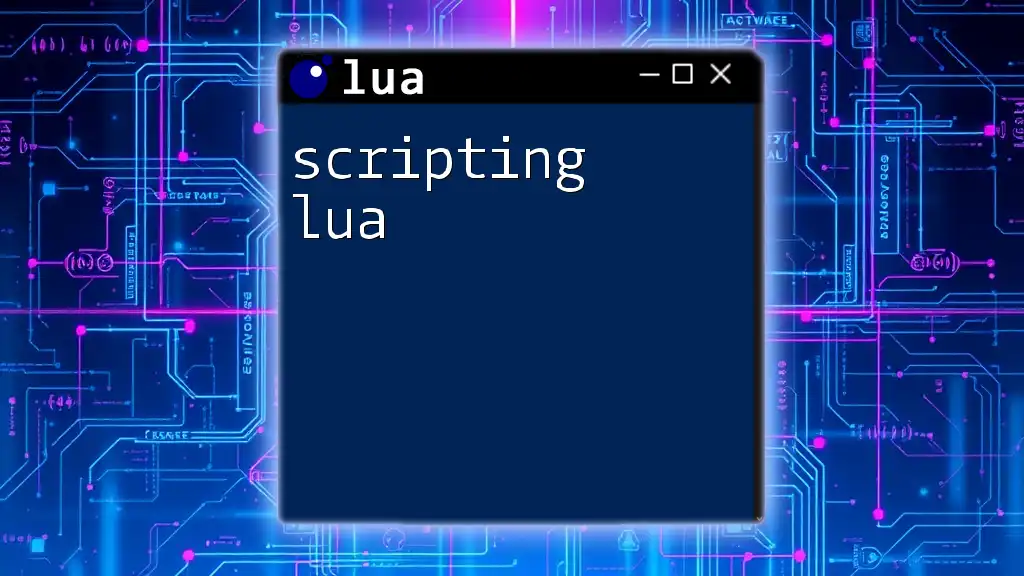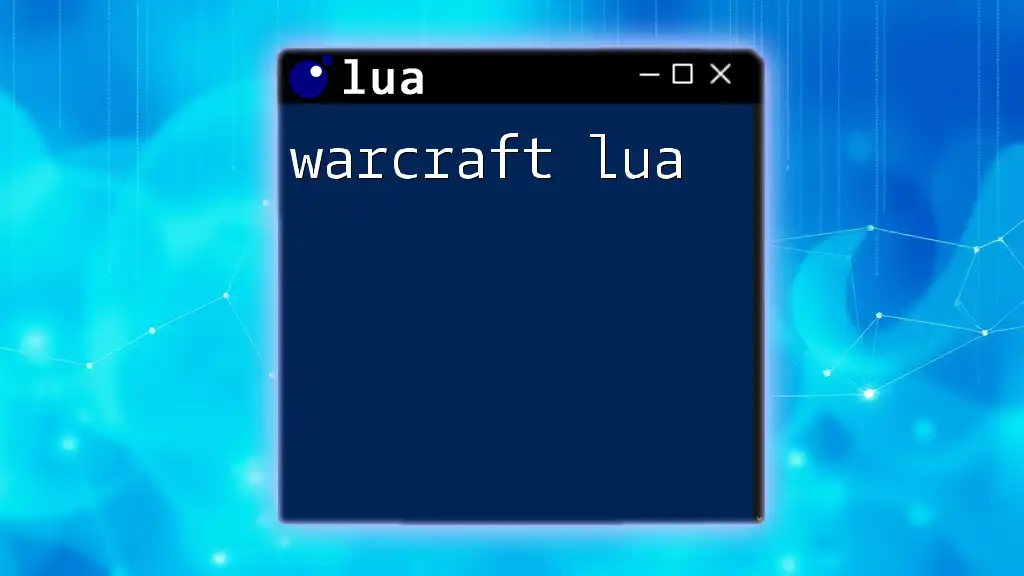In Lua, the `printf` function does not exist natively, but you can achieve similar functionality using the `string.format` function to format and print strings.
Here's how you can use it:
local name = "World"
local greeting = string.format("Hello, %s!", name)
print(greeting)
Overview of `printf` in Lua
What is `printf`?
`printf` is a powerful formatted output function in Lua used for displaying data in a controlled manner. It allows developers to format strings in various ways, based on the types of data being presented. This function plays a crucial role in ensuring that output is not only readable but also aesthetically appealing, especially when presenting complex or multiple values.
Why Use `printf` in Lua?
Using `printf` enhances readability compared to traditional output methods like `print`. With `printf`, you can structure your output precisely, allowing for better alignment and presentation of data. This is particularly useful in applications where clarity and format are essential, such as in debugging, logging, or user interface display.

Understanding Basic Formatting
Format Strings
Defining Format Strings
A format string instructs `printf` on how to present the output. It acts as a blueprint for formatting. The format string can include placeholders marked with `%` symbols, which will be replaced by the actual values when the output is generated.
Format Specifiers
Common Format Specifiers
Format specifiers tell `printf` how to interpret the corresponding variable:
- `%d`: Format integer numbers.
- `%f`: Format floating-point numbers.
- `%s`: Format strings.
- `%x`: Format hexadecimal numbers.
Examples of Format Specifiers
To demonstrate, consider the following examples:
print(string.format("Integer: %d", 10))
print(string.format("Float: %.2f", 10.1234))
print(string.format("String: %s", "Hello, World!"))
Each line showcases a different type of data formatted specifically as defined by the specifiers.

Advanced Formatting Techniques
Padding and Width
Specifying Width
Width can be specified in format strings to control how much space to allocate for each printed item. This is especially useful for making lists or tables look organized.
For example:
print(string.format("%10s", "Right").. " Alignment")
In this example, the output of the string "Right" is padded with spaces to occupy a total width of 10 characters, aligning it better in a formatted output.
Padding with Zeros
You can also pad numbers with leading zeros by specifying the width in the format specifier, as shown:
print(string.format("%05d", 42)) -- Outputs: 00042
This example pads the number `42` with zeros to make it a five-digit number.
Precision Control
Setting Precision for Floating Points
Precision is crucial when dealing with floating-point numbers, as it determines how many digits to display after the decimal point. Here’s how you can control it:
print(string.format("%.3f", 3.14159)) -- Outputs: 3.142
In this case, we request a precision of 3 decimal places in the output.

Escaping Characters and Special Formats
Escaping Percent Signs
How to Print Literal Percent Signs
If you want to include a literal percent sign in your output, you must escape it by using `%%`. This tells Lua that you are requesting a percentage symbol rather than a format specifier.
For example:
print(string.format("Completion rate: 95%%")) -- Outputs: Completion rate: 95%
Using Other Special Characters
Handling special formatting characters
You can also incorporate special characters like newlines (`\n`) and tabs (`\t`) directly into your output formatting for better text organization.
Consider this example:
print(string.format("Line 1\nLine 2\tTabbed"))
The output will show "Line 1" followed by a new line, then "Line 2" with a tab space before "Tabbed".

Combining Multiple Values
Concatenating Multiple Format Specifiers
Using Multiple Specifiers in One Statement
`printf` allows for multiple arguments to be used simultaneously, making it easy to display related data seamlessly.
Here's an example:
print(string.format("Name: %s, Age: %d", "Alice", 30))
This line outputs both a string and an integer in a single formatted sentence.

Error Handling and Debugging
Common Mistakes
Identifying Common Issues with `printf`
Even experienced users can make mistakes when using `printf`, such as mismatched types or incorrectly formatted strings. For example, attempting to format a string with an integer specifier without converting the type will cause errors.
Debugging Output Formatting
Tips for Troubleshooting
When debugging formatting issues in Lua, it’s essential to check that the number of arguments matches the number of format specifiers in your format string. Print statements can help identify where the mismatch occurs. Testing small blocks of code can also pinpoint issues effectively.

Conclusion
Summary of Key Takeaways
In this guide, we navigated the essentials of using `printf` in Lua, including format strings, specifiers, alignment techniques, and more. Understanding these elements is vital for producing logical and user-friendly output.
Encouragement to Practice
Experiment with different format specifiers and options in your Lua code. The more you practice, the more proficient you will become in utilizing `printf` effectively in your programming arsenal.

Additional Resources
Further Reading and Resources
For more information, check the [Lua official documentation](https://www.lua.org/manual/5.1/manual.html#3.4.3) that covers `printf` and string formatting comprehensively.
Community and Support
Engage with Lua forums and communities to discuss, ask questions, and share your experiences with other Lua enthusiasts. Participating in a community can greatly enhance your learning journey.

















